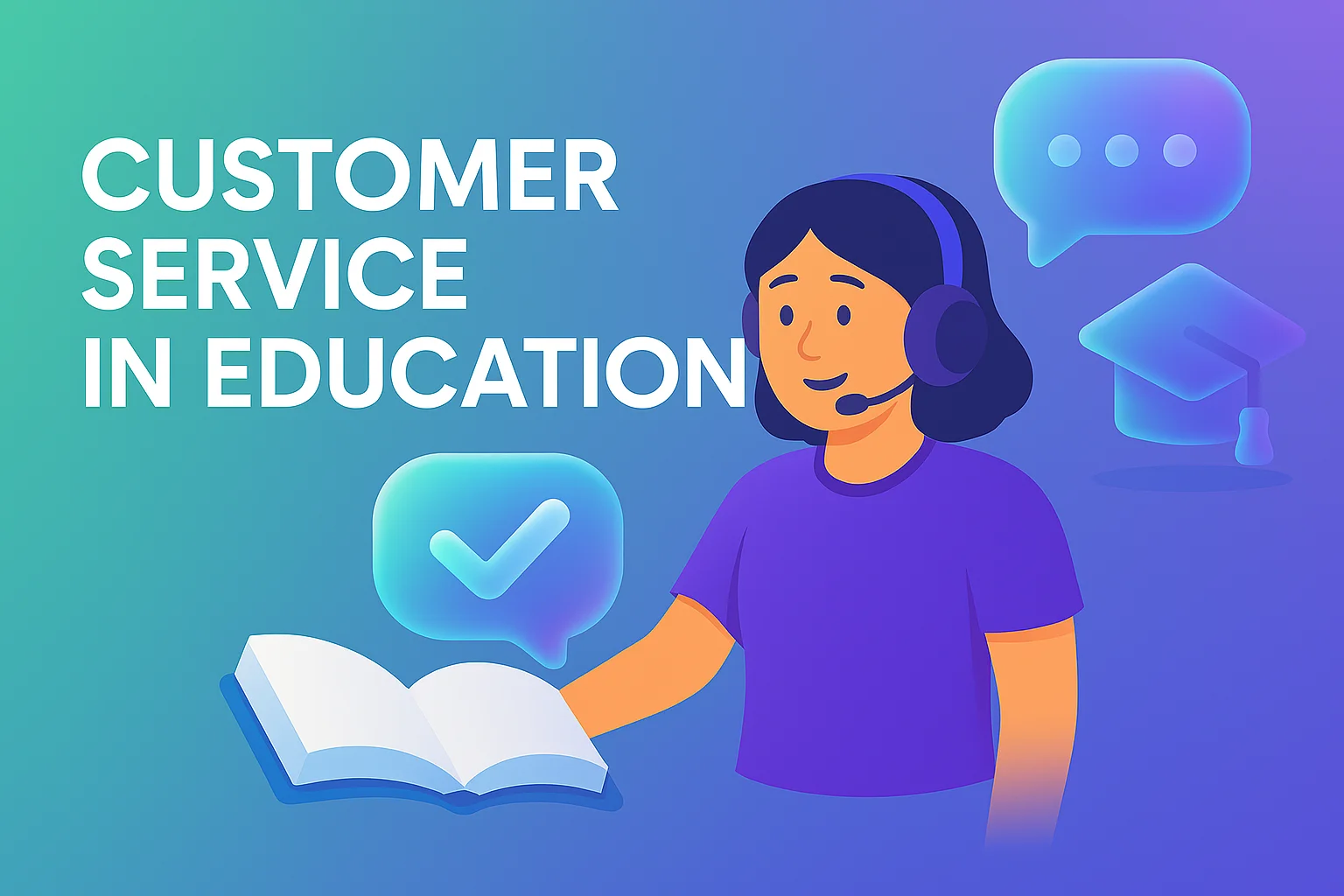What is Customer Onboarding: Strategies, Best Examples & Tools
- November 15, 2022
- 14 mins read
- Listen
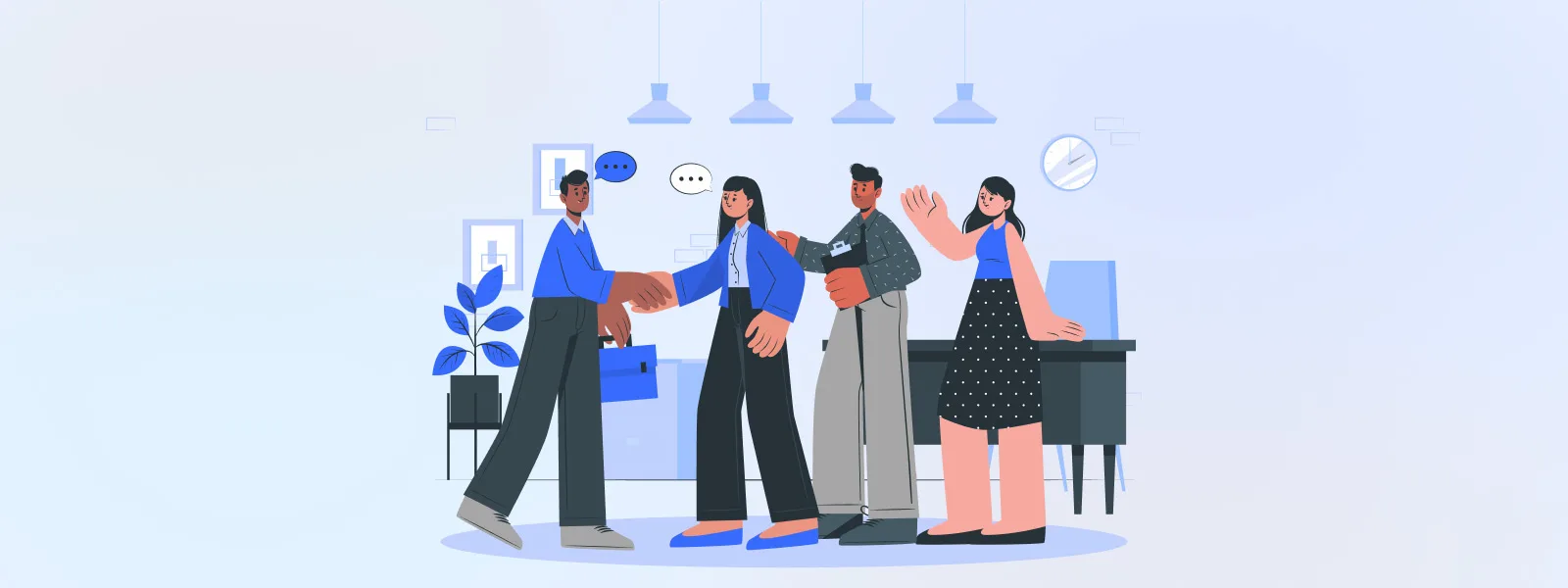
Your marketing and sales team works hard to engage with your target audience, convince them and, finally convert them into valuable customers. Yes, you have got some customers, but trust me the process does not end here. Well, it’s just a start.
Your main job is to retain them. You have to make customers understand the benefits they will get from your products or services. Here, clarify the 3 main things:
- What are the issues your product or service is going to solve?
- How does it work?
- Why customers should stick with your product?
It’s a long process and we call it ‘Customer Onboarding.’
Hi, I’m Suvashree, writing an article for you to discuss everything about customer onboarding and how you can do it effectively for your customers.
What is Customer Onboarding?
Basically, it is a process that new customers go through to get an idea about your company and that specific product or service they have paid for. Customer onboarding educates them about the product and its usage to make the best out of it.
The onboarding process starts as soon as the customer buys or signs up for a product and it gets continued till he understands the best features and how it can improve his daily life.
With an effective onboarding process, the customer journey can be improved by:
- Connecting customer retention and acquisition
- Educating the new users about your product or service, its features, and benefits
- Setting clear customer expectations regarding the specific product they have purchased
All the above-mentioned factors together help to reduce churn rate, grow customer base, and eliminate the struggle of getting new users every month.
Here let me give you the ultimate guide to your customer onboarding process- definition, benefits, and strategies that can help you to provide your customers with a pleasant product transition experience.
Why Customer Onboarding is Crucial?
A good customer onboarding process always creates a long-lasting positive impression on your customers. If the product features and its usage are clear to them, they can use it efficiently. By the end of the process, they get satisfied and confident about your product. It helps you to earn their trust.
Here, you need a make all the installation documents easily available so that they can go through whenever required. A simple and effective onboarding process always sets a positive tone for the relationship you just made with new customers.
Customer onboarding has a couple of advantages, it helps to get higher Customer Lifetime Value (LTV), reduce churn rate, and turn new customers into loyal ones.
To get in there, here are some of the important factors you need to keep in mind,
- Your existing customers always bring more revenue for your business rather than the new ones
- The satisfied customers trust you blindly and will become the major referral sources and brand advocates
- Acquiring new users is much costlier than maintaining the existing ones.
So, what do you need for providing the best onboarding experience? Offer them some free trials to understand your product or service in a better way. Here they will experience in real what values it is going to add to their daily lives and how they can get benefitted. If they have a positive experience, chances are that they can be converted into paid customers.
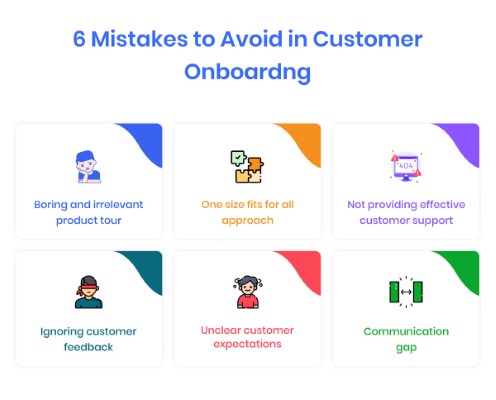
The Customer Onboarding Process: Strategies and Best Practices
The point here is to make the new user get comfortable with all the available features and different aspects of your service. The onboarding flow may vary from customer to customer based on their preferences. You can’t force him to see everything you have prepared like the welcome video or message, some specific product tutorials, etc. But give him complete access only when he is clear about the product and is completely ready to use it.
Here are the 10 major steps to follow during the customer onboarding process that can help you to convince your new users for setting up a long-term relationship with your company. Some steps are for especially SaaS companies whereas some are for all other businesses.
1. Sign-Up Process
The whole onboarding process cannot be started until a user initiates a sign-up for your service. It can be called the first step of a user’s product journey.
Sign-up is one such touchpoint where the user is very much excited to start the new journey. So, always make sure that his excitement does not fade away throughout the long onboarding process.
Kickstart this process by getting vital information about the new customer. This will help you in user segmentation and delivering to their needs.
You can ask the customer for providing contact details like email, phone number, address, type of business he has, the total number of employees, stage of growth, business objectives, and so on.
But if you see a higher number of drop-offs (meaning customers are signing up but not completing the whole process), it means that they are getting irritated for asking them too many questions too soon.
Best Practices:
- Keep your sign-up form short and simple
- Don’t ask the users too many questions at a time. You can get information from them at multiple stages rather than asking all at once
- You can make the process easier by allowing them to sign-up through some popular channels like Google, Facebook, or Slack
2. The Welcome Mail
Once your user successfully completes the sign-up process, the next step will be to send him a ‘Welcome Mail’ to show your gratitude and thank him for choosing your business.
Here redirect the user directly to the specific product page from where he can start experiencing your service.
Best Practices:
- Say ‘Thank You’ to show that they are valuable to your company
- Share valuable resources like tutorial videos, installation manuals, FAQs, etc to get started easily
3.The First Login
By now, the new user has gone through your product tour and watched a lot of videos and tutorials, so he must have an idea about the service and its benefits. Now it’s time to use it personally. The first time he logs in to the product dashboard, the overall design and user-friendly interface should create a positive impression for your company.
Here, if you want him to start using the product, offer some guided user manuals so that the customer can follow the step-by-step installation process.
Best Practices:
- Please don’t let the user guess anything. Show some popups or setup instructions as soon as he logins to his dashboard. Show him the steps and help him to get started with the product
- Here, you can offer some discounts or referral coupons to make the whole journey much more exciting for him. We all love discounts and rewards. So do the customers.
4. Greeting Message
It is a bit different from the basic welcome mail that the new user gets after a successful sign-up. This in-app welcome message pops up after the user logs in to his account. It encourages the new customer in setting up his user account and personalizing it as per his preferences.
Best Practices:
- Ask the new user to reset his password and turn on all the notifications
- Add some product tutorial videos for better guidance.
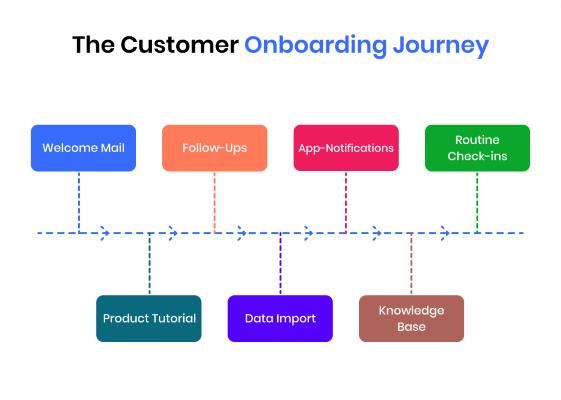
5. Product Tour
A product tour takes the customer through various stages to complete the onboarding process, understand product usage and its benefits. It is one of the most crucial parts of the whole process. The main job of your product tour is to show him all the useful features and how they can enrich his lifestyle or business. Here the easiest way would be to let him start using your product by himself.
Best Practices:
- First, teach your customers how to use all the important features. Let them understand those. Later you can show them all the secondary features.
- Don’t add too many things to your product tour. It should be short and crisp. Otherwise, the users may get confused.
6. Data Import
But sometimes if the new user is switching from a different service provider, the importing process may become time-consuming and complex.
Best Practices:
- Importing the data from one part to another can be tough. So, try to automate the process as much as possible.
- You can offer real-time assistance through live chat, voice, or video chat to the users because there is a high chance that the users need help at this stage.
- You can build a separate onboarding team to take care of the new users.
- Add clear instructions so that the users can understand the process well.
- Always provide multiple options for importing data.
7. Knowledge Base
It can be called a self-service help center where customers get information for successfully completing the onboarding process. An effective Knowledge base can help the user to solve problems quickly and independently without asking for help from others.
Best Practices:
- Develop your knowledge base with all the important FAQs that the new user needs to know
- Always provide 24/7 customer support for any kind of assistance
8. Regular Updates & Routine Check-ins
It should be your never-ending practice till the customer is with you. As you keep on updating your product or service, regular check-ins are required to have a look if everything is working fine or not.
Whenever you introduce a new feature, you should make the customers aware of it. Also, check-ins are required to see how he is using the product, if the plan provided to him is sufficient or not, etc. Some of the customer onboarding best practices may include,
Best Practices:
- Make it compulsory in your customer onboarding process
- Constantly get in touch with the new user to check if everything is working fine.
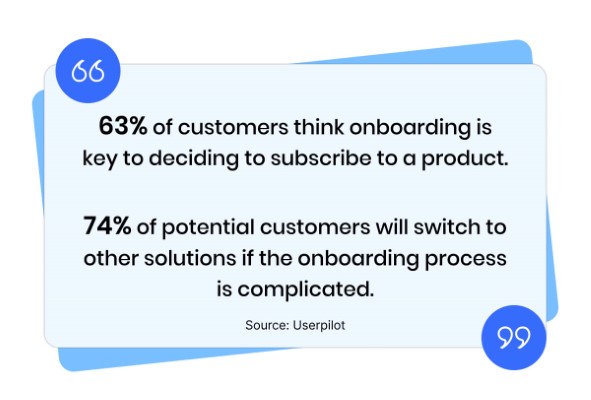
Customer Onboarding-Some Useful Tips
Here are a few important things that you need to keep in mind for designing the customer onboarding journey and making it a positive experience for the new users.
Understand Customer Needs and Requirements
You need to understand first the buyer persona clearly which in any way lets you understand your customers. Try to figure out the possible obstacles customers may face, their pain points, and how your product can be a great solution to all those problems making their lives better.
If you can find this information, you can deliver a much more effective and smooth customer onboarding journey.
Describe the Product Benefits
Always be transparent to the customers on what to expect from your products. Your sales team should make them understand all the product features and benefits so that customers don’t have any confusion later.
This concept should be maintained during the onboarding process too. If the product and its usage are not clear to them, they will never be able to use it properly. They should understand the product value and how it’s different from other products from different companies. Otherwise, customers will not be happy and gradually give up.
Stay in Touch Always
Alwfays be with your new user during the onboarding process. Please don’t make him feel alone. After the initial welcome mail, try to get in touch with him at every stage of customer onboarding. You can also offer live chat assistance to the user where he can reach you whenever he feels like. You can also engage with him proactively to check everything is fine and if he needs any kind of assistance.
Try to Create a Positive Impact
“Always try to impress your new customer”
Keep this in mind. Remember that the first impression is the last impression. This applies to the customers too. If you can create a positive impression of your company or product, chances are high that the customer will stick to your brand for a long time.
So, impress him once he signs up for your product. Try to deliver an extraordinary onboarding experience to him so that he happily refers you to others.
Measure Success for Further Improvements
You must be thinking customers are getting a great onboarding experience and everything is going well. Don’t be so sure about it!
Don’t assume anything positive without measuring the effectiveness. It can be the opposite too. Effective onboarding benefits your new users and the company both. It’s very important to check how everything is going. So, get customer feedback on regular basis, ask them what’s the issues they are facing, and what they liked most about the whole process. All such information together will give you a clear picture and helps to identify the pain points or areas of improvement.
Some Great Examples to Look Into
Let me show you some great examples of customer onboarding that I really like and you can use to get some beautiful ideas.
REVE Chat
REVE Chat is a live chat software that helps online businesses offer instant customer assistance. It lets you provide customer support both on your website and mobile application.
REVE Chat’s proactive chat, voice, and video calling facility, chatbots are some of the most talked about features. It has set a great example of providing an excellent customer onboarding experience.
REVE Chat provides a 14 days FREE TRIAL to its users. It knows what the new user actually requires to get started. Apart from providing effective user manuals and videos, it always provides round-the-clock live chat assistance to users. REVE Chat’s step-by-step onboarding process helps customers to complete the whole transition effectively without getting bored.
Etsy
Etsy is an American eCommerce business specializing in making handcrafted or vintage items and beautiful crafts.
Etsy lets the customers understand where they stand exactly in the onboarding process. The indicator placed on the top of the webpage shows a customer his present step and other upcoming stages required for successful completion.
Customer Onboarding Tools or Software
It does not matter whether you have ten customers or thousands, but it is tough to provide assistance to each customer during his onboarding journey. A customer onboarding tool does this job on your behalf. It offers a complete optimization of the whole process making it automated as much as possible. Apart from easing the whole onboarding process, it also helps in increased sales conversion and customer retention for your company.
HubSpot
HubSpot has different tools for serving different segments of your business like marketing, sales, and operations. The best part is these all can be integrated with a single platform thus allowing you to onboard and serve your customers efficiently. You can start onboarding the customers for free and then gradually upgrade as per your requirements.
It lets you design the product tour effectively where you can highlight all the key product features based on the customer information given during the sign-up process.
UserPilot
It is a great tool to develop interesting feature callouts within your own software. With UserPilot you can engage new users to learn different product features in the most effective way.
UserPilot enables you to:
- Highlight all the important features of your product or service
- Create many to-do lists for making the onboarding process seamless
- Segment the new users in different groups and provide different kinds of assistance based on their requirements.
An Effective Customer Onboarding Can Get You an Edge
A seamless customer onboarding can work as a catalyst in selecting your product over others. Can you think about it this way? You need to choose between two almost similar products. The first product company has given you proper training and consultation whereas the second one is not so impressive in delivering effective customer service. Which one will you choose? Obviously the first one. Right? Well, your new customer also thinks like this only.
Customer Onboarding comes into the picture as soon as the new user signs up for your service, but it also works hard to build a strong foundation for a long-term relationship with the customers. It not only helps customers to understand your product completely, getting benefited but it also helps you in customer retention and more sales conversions. Don’t forget, if you let your customers be successful, eventually you also will be having a successful business.
Make your customer onboarding process smooth and effective by providing instant customer assistance through live chat, voice, or video calls with REVE Chat. To know more about it, Sign-up for the FREE TRIAL today.


